Landscaping: decorating the site with flowers
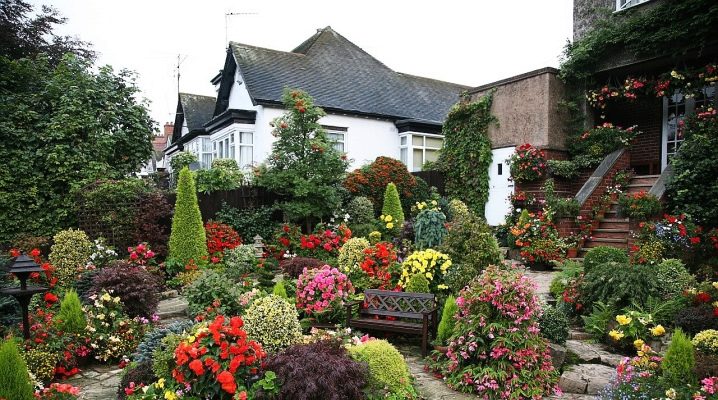
Garden design is often created using flower arrangements. Both annuals and perennials can be planted in the flower garden. It is necessary to plan their location in advance. How to do it most successfully, you will learn from this article.
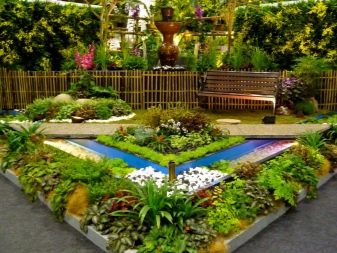
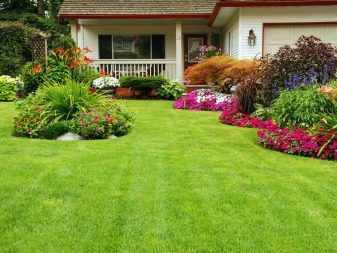
Features of use
You can combine rock gardens, stone slides, and sculptures with flower beds. The regularity of the form is ensured by annual plants. In the composition, viewed from all sides, tall plants are planted in the center.
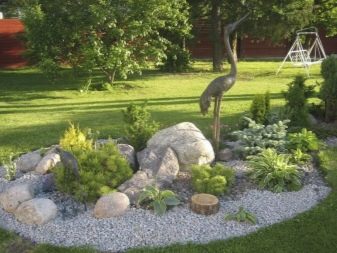
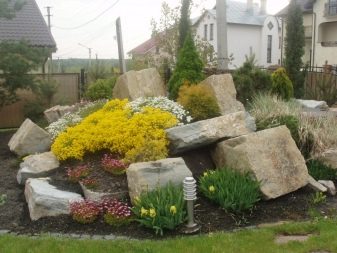
Color also plays an important role. Warm shades improve mood, while cold shades soothe. Neutral shades are used to accentuate and accentuate details. However, red in excess can be tiring, while purple can be depressing and create a gloomy atmosphere. In contrast to them, white flowers give the composition some lightness and airiness.
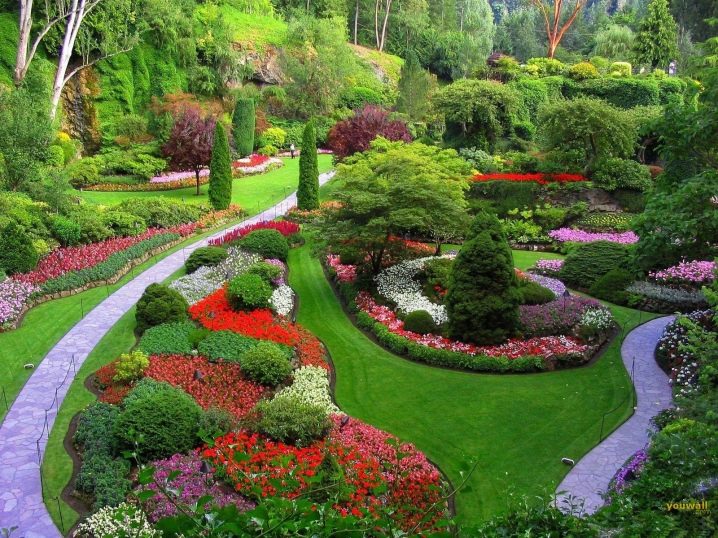
Plants with bright buds are ideal for accentuating any design details. Dahlias with asters, roses with carnations, Drummond phlox, bells, marigolds, gladioli will bring rich colors to the overall palette. For a harmonious combination, it is recommended to choose up to three different colors and use only them in the design.
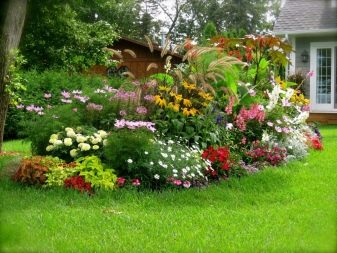

Plant selection
Roses are very popular with both landscape designers and amateur gardeners. These extraordinarily beautiful flowers can play a variety of roles in the composition. A rose can act as the basis of the entire composition, or it can fade into the background, because there are varieties that are distinguished by their miniature size and small inflorescences. They are able to highlight the attractiveness of other colors.
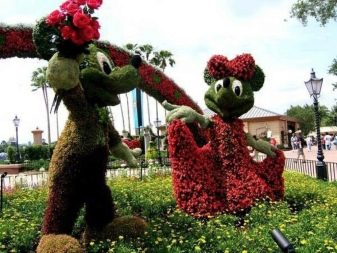

A wide range of varieties allows you to choose bushes that are suitable in color and size. Moreover, even the smallest area can be decorated with a miniature rose, which looks extremely elegant. Plus, roses go well with other plants in the garden.
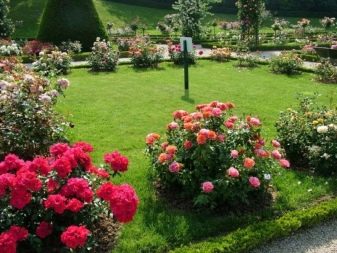
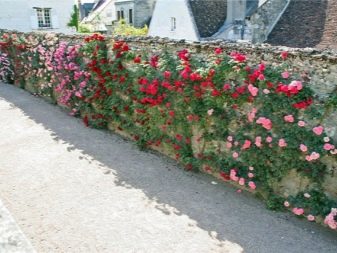
In landscape design, the following varieties of roses are most often used:
- Large-leaved climbing. It is a climbing shrub that needs support to grow. It grows quickly and is great for creating a hedge or arch. They need to be planted at a distance of 0.5 m from each other, pruning is carried out in the autumn;
- Canadian. Differs in beauty and exquisite shape. The variety tolerates low temperatures and diseases quite well. At the same time, the plant is unpretentious and does not require special care. Therefore, these roses take root well in different areas and grow in a lush bush;
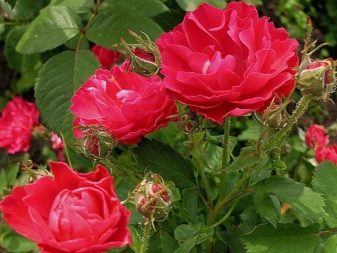
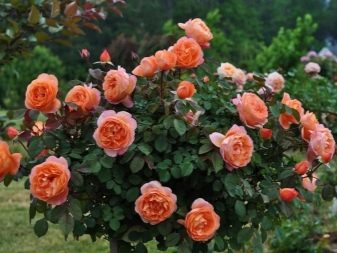
- English. Differs in that it blooms throughout the year. The inflorescences have different shades and are densely strewn with twigs. This variety also includes Austin hybrid roses;
- Groundcover. It is a climbing plant that is often combined with other varieties of roses or with other plants. Inflorescences have a calm shade and well set off bright colors;
- Parkovy. The variety does not require special care, it is resistant to frost. In winter, there is no need to shelter roses from the wind and cold. Inflorescences can have a variety of colors and shades, which makes it possible to create interesting compositions;
- Floribunda. Differs in unpretentiousness, resistance to cold and decorativeness. A distinctive feature is the flower, which is like a wave. During the summer, the buds become more and more, from which the roses become very lush and bright.

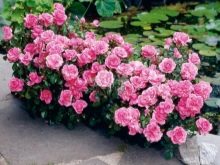
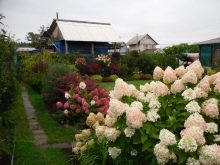
Hydrangeas can also beautify the site. In total, 35 varieties of these flowers are known, most of which are greenhouse and indoor species.
However, in our climatic conditions, only two of them are able to take root and bloom well:
- Paniculata. It is characterized by large, bright leaves. The inflorescences visually resemble a panicle, hence the name of the flower. The Bobo hydrangea also belongs to the panicle hydrangea.
- Tree-like. In height, it can grow up to three meters. Blooms from mid-summer to late autumn (July-October). The flowers are white, collected in corymbose inflorescences. Visually, such inflorescences are similar to a saucer. The plant prefers places well lit by the sun and does not tolerate shade well.
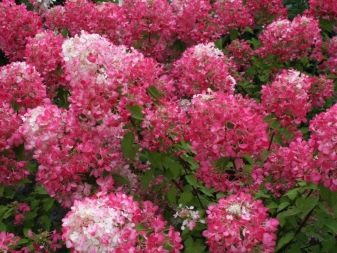
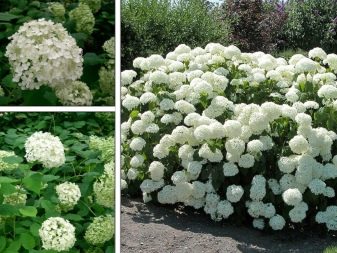
Basically, hydrangea is planted in open ground. At the same time, seedlings that have reached about five years of age take root best of all.
The landing itself can be divided into several main stages:
- Choosing a place. The root system of the plant is branched, so it needs free space. It is important to avoid close proximity to other flowers, especially bulbs;
- Preparing the soil. The soil should be neutral or acidic, without alkali. Therefore, the soil should not be mixed with ash, chalk and lime;
- We apply fertilizers. To ensure rapid growth and rapid flowering, it is advisable to fertilize the soil with mineral organic fertilizers, brown peat or sawdust;
- We plant flowers. We prepare a hole for seedlings about 60 cm wide and 40 cm deep. Between the bushes, you need to maintain a distance of at least 2.5 meters. First, the roots need to be shortened a little, and the shoots should be cut off and only a few buds left.
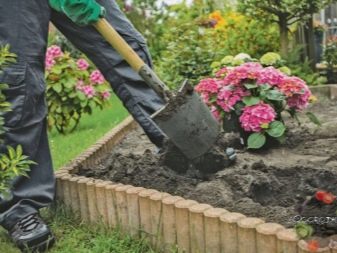
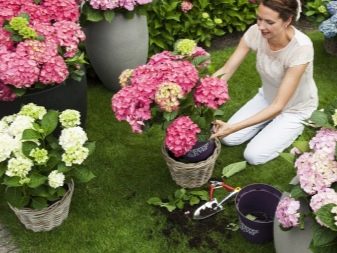
You can plant hydrangeas in spring and autumn. Planting in spring will allow the roots to harden more reliably for the winter.
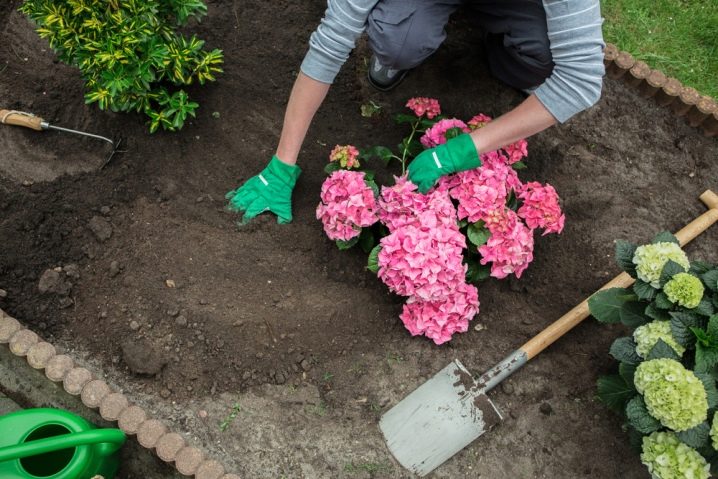
Perennials are ideal for creating a shady garden. This solution provides for the choice of certain plants, since not all varieties of flowers are able to grow and bloom in a shady area. These include the ornamental-leaved host and the fern. They boast an unusual color and foliage shape.

Also, in a shady area, an ordinary garden lily of the valley grows well. But if the choice fell on these graceful flowers, it is important to remember that under favorable conditions they grow very quickly in the area and are quite aggressive towards other plants, which may eventually die. The forest dweller - lungwort - also takes root well in a shady garden. It blooms very luxuriantly and in the spring it will be able to revive a garden that has not yet woken up after winter.
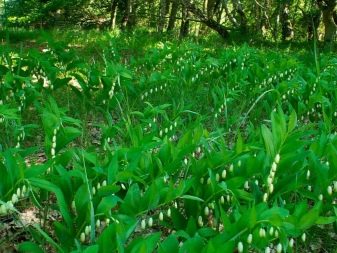
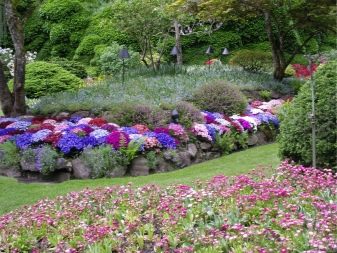
Near decorative ponds, almost all plants take root perfectly.
The most popular are:
- Garden and Siberian iris;
- Badan;
- Day-lily;
- Delphinium.
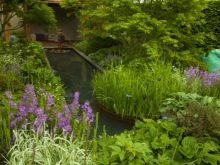
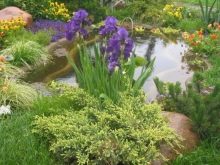
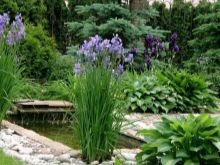
Rock garden is a popular solution among landscape designers. With its help, you can radically transform the site, accentuate any particular corner, or vice versa, mask an unnecessary area. To create a rock garden, perennial and low-growing plants are most suitable, which are able to take root in rocky soil conditions. These can be spring flowers: Greig's or Kaufman's tulip, muscar, crocus, hazel grouse or spit.
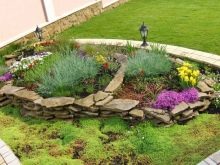


Next comes the flowering of primroses and anemones. After them subulate phlox and stonecrop bloom. And only at the very end are annual flowers.
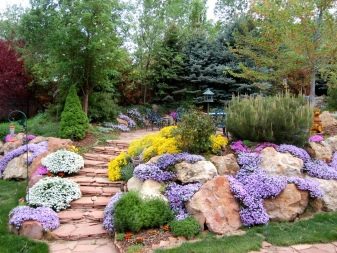
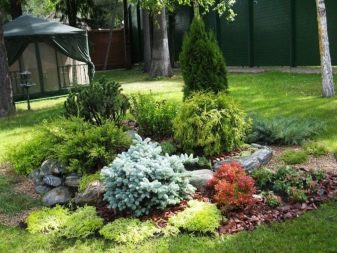
Low conifers are often used as a background, for example, cinquefoil and ageratum, since such plants can, as it were, unite the entire space into a single whole and give the slide the appearance of a single composition. For lovers of rhododendron, it is important to consider that these plants are extremely whimsical and demanding to care for. Rhododendron thrives best in warm regions and does not tolerate cold very well.
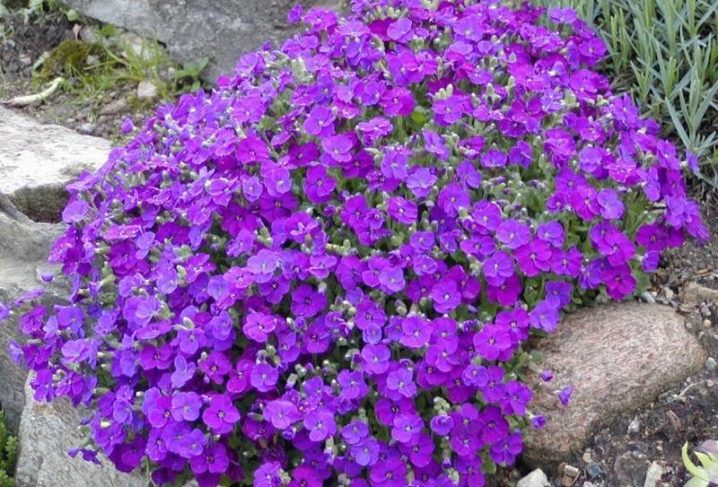
Aubrieta is a perennial plant that first appeared in warm southern countries. However, it perfectly tolerates the harsh Russian climate. Aubrieta is a short shrub that can grow in height up to a maximum of 20 cm.The rich color palette and early flowering have long won the hearts of gardeners and summer residents.
The undoubted advantages of planting Aubrieta is its unpretentiousness, it does not compete with other garden plants and has a long flowering period. It can grow both in sunny, warm countries and in Siberia.
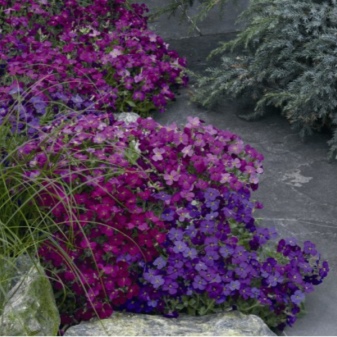
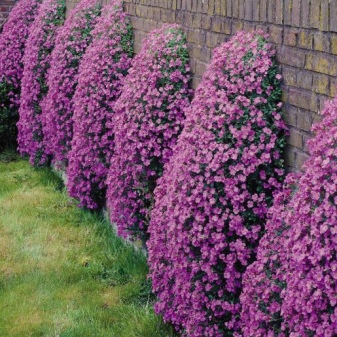
The most popular is the cascading aubriet. This variety is a soft dense floral carpet with blue and reddish flowers. Aubrieta can be used to decorate a rock garden, various gazebos, hills and rocky walls. In the process of growth, the flower will descend to the bottom in the form of a cascade.

Original combinations
Usually, when making out a summer cottage, several types of different plants are used. For example, tall trees go well with green shrubs and low or bushy perennial flowers. A very good combination of climbing rose with clematis for finishing an arch, gazebo or trellis. The union of flowers with bright inflorescences and white clematis is also no less effective.
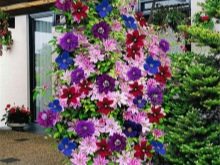

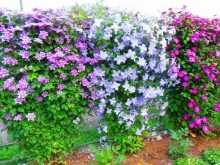
Flowers that differ in shade look original. For example, a soft pink lily with a bright red rose. The advantage of this neighborhood is that both of these plants require the same care. To make bright accents in the garden, you can combine a standard rose with geraniums (magnificent and Georgian varieties). Geranium bushes with flowers of different shades will perfectly complement a bright and colorful rose.
Roses also go well with plants such as geyher, astantia, hispophilus, sage, catnip, and medium-sized cereals.
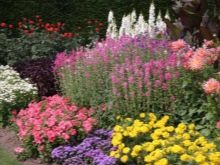


We decorate flower beds
Flower beds can be of different shapes: oval, rectangular, triangular and curly.
By types they are:
- Monoclumba, consisting of flowers of the same variety and color;
- Arabesque - a flowerbed with a complex shape;
- Vertical;
- Raised - the height of such flower beds can reach 1 meter;
- Regular - the flowers are arranged in a geometric pattern.
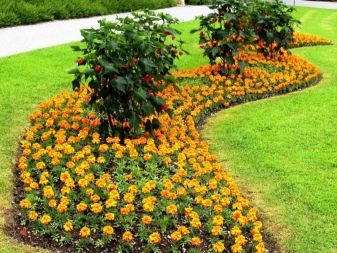
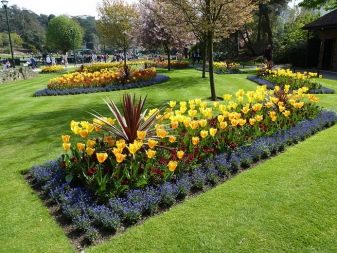
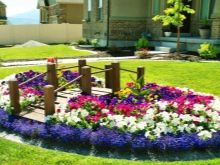


It is not difficult to break a simple flower bed with your own hands. To do this, you must first draw up a plan where the flowers will be planted.
You will also need the following tools to work:
- Shovel;
- Wheelbarrow;
- Master OK.
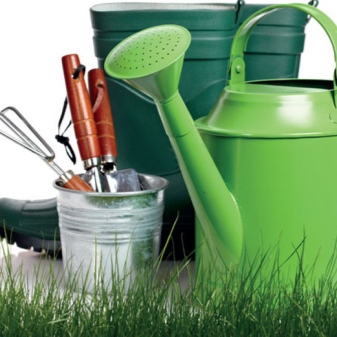

And materials:
- Bricks;
- Sand or gravel;
- Cement mortar;
- A piece of flexible plastic.
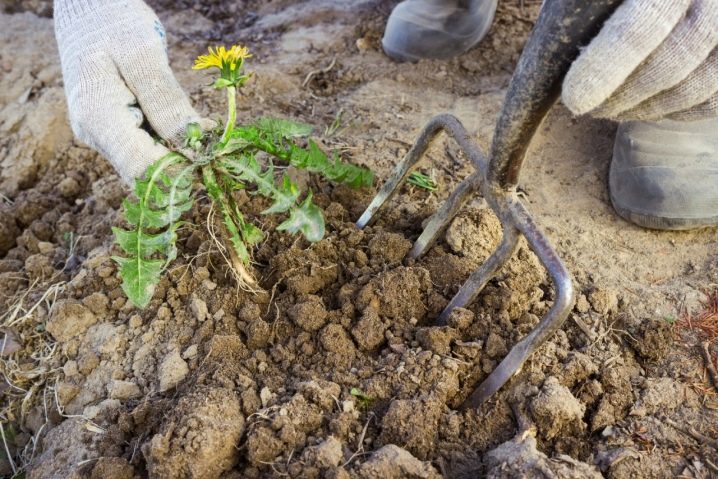
Sequencing:
- The selected area must be cleared of debris, weeds and roots must be removed. We limit and outline the boundaries of the future flower bed;
- We dig a hole (20 - 40 cm deep) and then carefully tamp the earth inside. We fill up the gravel. To create a rounded shape, we limit the boundaries of the future flower bed with flexible plastic and fix it. Then we lay bricks around the perimeter to get a kind of side. We close all gaps with cement mortar;
- We are waiting for the solution to dry. After that, we fill up the earth so that a hill forms in the central part of the flower bed;
- We leave the land like this for 14 days. During this time, it will settle and settle. Then we make holes and plant seedlings. It will be more practical for beginners to make one large flower bed with a simple shape. If desired, it can be upgraded into more complex compositions.
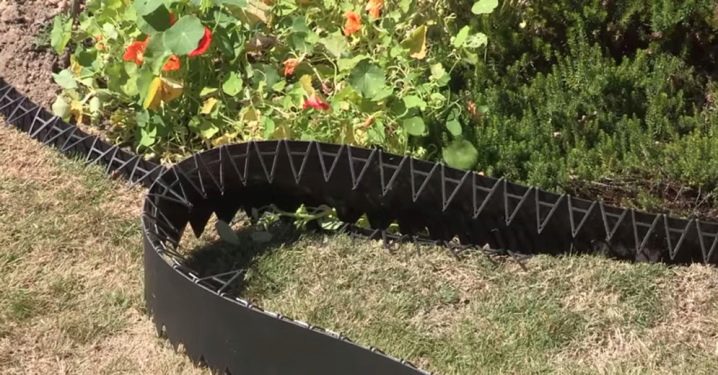
To make the flower bed pleasing to the eye as long as possible, you need to plant plants with different flowering times. Daffodils, tulips, primrose, lilacs, crocuses, saxifrage bloom from May to June. From June to July - peonies, bearded iris, carnations, cornflowers, delphiniums. July to August - bells, calendula, chamomile, phlox, pansies, petunias and roses. From August to September - chrysanthemums, gladioli, asters and dahlias.
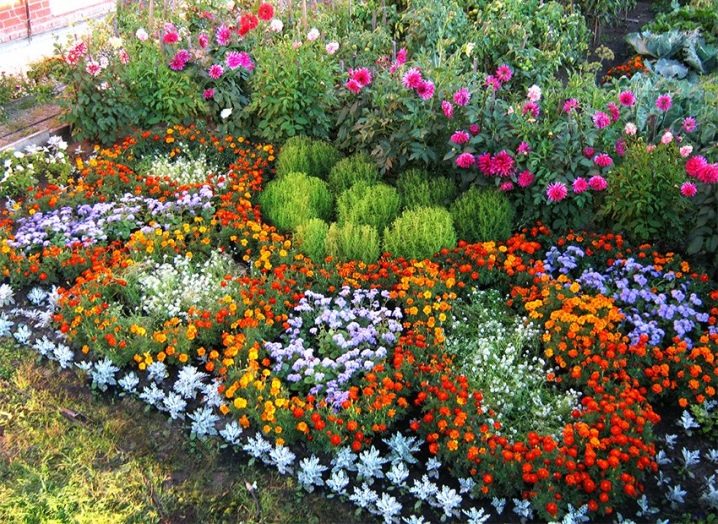
For uniformity of the flower bed, the space between the plants can be filled with ground cover flowers (creeping), planting them at a distance from each other.
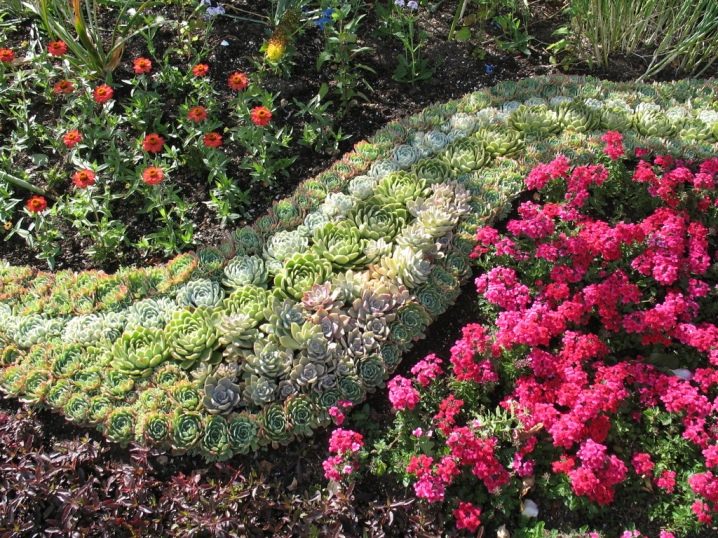
Useful Tips
It is better for novice flower growers to get acquainted with the relevant literature for a start, since not all flowers are combined with each other. Experienced gardeners are advised to combine tea types of roses with their hybrids, and miniature ones with ground cover.The options presented above are proven combinations with beautiful drops and steps.
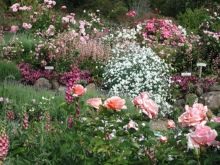
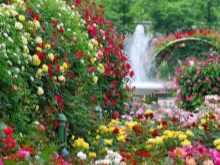
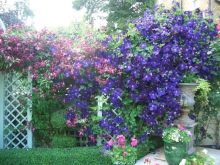
Curly varieties can be performed singly and in combination with anything. Sturdy supports are required to form a garden vertically. And in winter, the roses are closed together with the support, without removing the lash. The owner must take into account that some varieties can easily tolerate low temperatures, while others do not tolerate them and may die.
For normal growth and development of neighboring plants of different types, they need to be planted from each other at a distance of about one meter. Flowers must be sprayed from time to time against parasites.


Beautiful examples
In fact, a rose garden is a large flower garden on which only roses grow. It can be collected from different varieties or consist only of one, the most beloved. The rose garden always looks spectacular and picturesque, so it can easily become a real pearl of the garden.
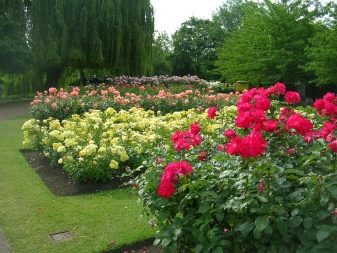

The curb is a low hedge. It is used to delimit sectors, for example, in a rose garden, or to highlight any specific areas. For example, a border of white roses can run along the paths, and a pink hedge can be used to decorate the area around the gazebo and recreation area. They also decorate artificial streams, planting flowers along them. The border can be easily combined with similar structures from other plants.

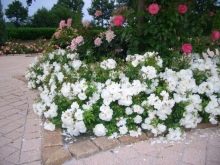
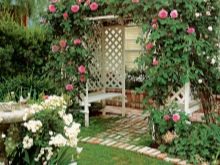
An arch is a gazebo made of 4 wires. After that, twisting roses are attached to the wire, which wrap around them. The arch can be of any size, if desired, a bench is installed under it, thereby creating a secluded place to relax. You should choose only curly varieties of roses that are distinguished by lush flowering (standard, English and park). You can also form a hedge from a variety such as a gray rose.
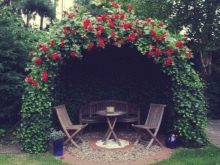
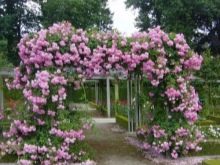
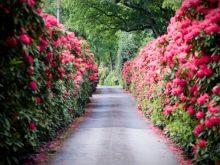
If it is not possible to place a large number of flowers, then you can plant a single rose bush. It will perfectly smooth out some roughness of the alpine slides, walls of stone and brick and will perfectly combine with various relief compositions.

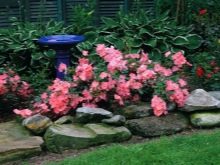
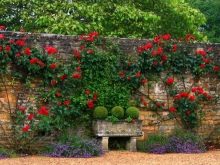
An extraordinary solution would be to plant the bushes in special containers, which can later be placed in different places. Floribunda and stamp rose are usually chosen. Park and English varieties in this case are inappropriate and are used very rarely.
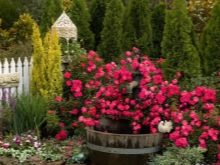
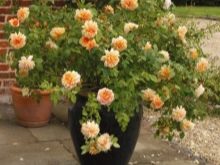
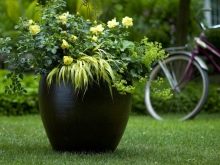
"Stream" is an ordinary flowerbed, but shaped like a stream. You can create "cascades" and "waterfalls", they must be taken into account when planning. Ground cover varieties are usually chosen, and stones, pebbles or gravel are used for formation.
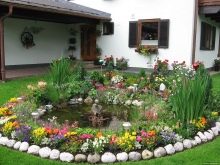

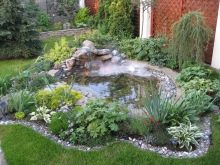
The massive, rough and dark stones of the alpine slide contrast beautifully with the colors that are light and delicate in color. Colorful and vibrant flowers look good with white stone. You can plant any varieties of plants, but most often gardeners prefer miniature or ground cover species. Sometimes the slide is divided into mono-segments: one grade for each segment of the slide. It looks very unusual.
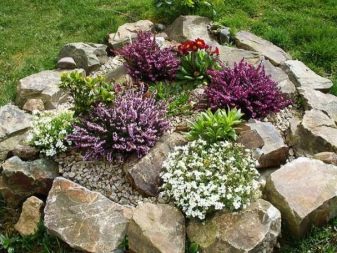
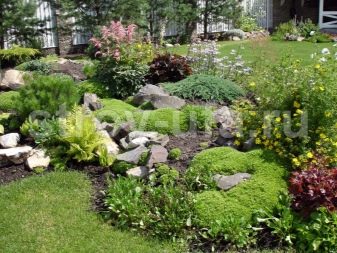
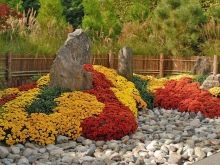
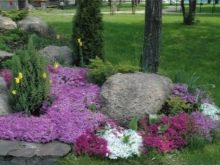
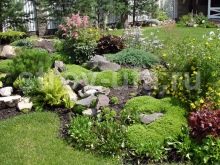
Hydrangeas blend harmoniously into a variety of floral ensembles. With their help, you can beautifully decorate a summer cottage in styles such as:
- Mediterranean. The flowers are planted in brightly colored ceramic containers and placed on a gravel backfill. Also, flowers can be planted around the perimeter of the site, and for vertical decoration, use a climbing hydrangea. To complete the picture, advise garden furniture and various decorative elements are selected;
- Oriental. Such an ensemble is suitable for medium or small leveled areas. The main accent is the flower beds, on which the flowers create a peculiar pattern, and a large number of paths;

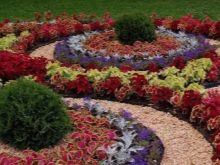
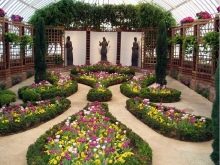
- Rustic. The style is also distinguished by the presence of many flowering plants (flower beds and beds). To create the appropriate rustic atmosphere, the plants are planted in buckets, watering cans and even cans.Also, the so-called cart with flowers, which can be placed in the garden, will perfectly fit here;
- English. The style is suitable only for a well-lit area with fertile soil. The English ensemble includes elements such as hedges, lawns, paths and garden houses. In the central area of the composition, you can use, for example, a combination of hydrangea with cold-resistant geranium and ornamental grass. As a result, you will get an elegant, but at the same time strict composition in full accordance with the style.
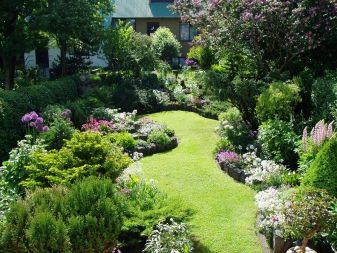
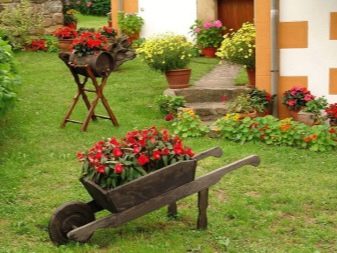
How to make a flower bed with your own hands, see the next video.



































































The comment was sent successfully.